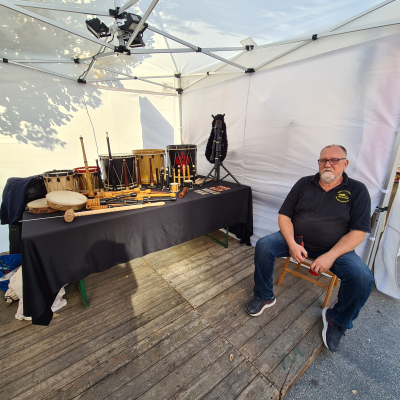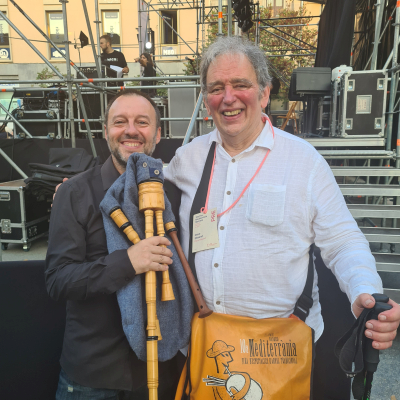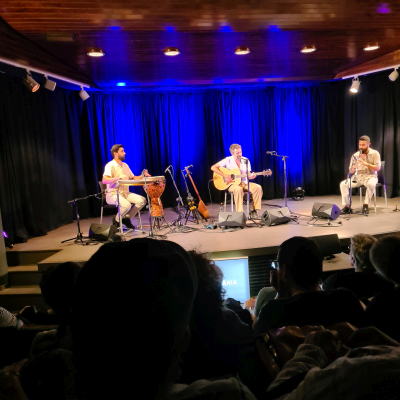Fira Manresa 2023: Old Alleys, New Sounds
17. 10. 2023 | Rubriky: Articles,Live reviews
[by Martha Hawley, Haarlem] The Fira Mediterrània was held in October 2023 for the 26th time, in celebration of Catalan traditional and popular culture, accompanied by performance and artistic contributions from around and across the Mediterranean. The pace of the festival is determined by the topography of its base in the hills north of Barcelona, in Manresa, all on an incline, very appealing to this visitor from the Lowlands. Performance venues are spread out all over town, in and around commercial and residential zones, in small theatres, even smaller cafés, and in large tents wherever an empty square allows.
There are many performing dancers on stages, but the music inspires visitors to just spontaneously break into action on the street.

Manresa’s main theatre is the Kursaal, where the opening night spectacle was held, featuring Italian singer Maria Mazzotta, music and production by Catalonia’s well-known musician and producer Raúl Refree, and the female Plèiade Choir. Mazzotta’s voice was a dynamic, penetrating pan-Mediterranean timbre for opening the festival, and Plèiade impressed with their sound.
Catalan music itself is one of the oldest unbroken musical traditions in Europe; musicians and artesans furthering the old arts are present on the stretches of outdoor festival grounds in the center of town.

Among the traditional instruments undergoing revival are the bagpipes, banned, as were all popular sounds, languages and compositions, under the Franco dictatorship. Recovery of local culture began 40 years ago, but the Catalan, Italian and Turkish pipers in the “Mediterranean Bagpipes Company” met just a few months ago. This was clearly a fortuitous meeting, as their exuberant sound drew joyous listeners and dancers out onto the public square.

Fusion from around the Mediterranean is a familiar sound at the Fira, but Catalan sounds hold their own throughout the programming. Vocalists, solo musicians and theatre companies abound, not to mention the Cobla, often played as dance music for the beloved Sardana. This year, the “Cobla Lluisos de Taradell” brought a female teller of legends, backed by traditional Cobla musicians, to enthrall the young crowds, and it seemed a very celebratory way of sharing the old culture with the new generation.

As affirmed by the Fira’s Artistic Director Jordi Fosas, it is one of the festival’s challenges to pass on traditional culture to the youngest listeners, while taking into account the changing demographics in Catalonia. New residents come from all over Spain, Latin America and North Africa, and the concept of “popular culture” must change and expand with the local population.
Mediterranean-rim countries are already there, with, as mentioned above, Italy’s Puglia leading the opening night. France’s “Les Mécanos” explored French and Occitanian traditional song in glorious a capella formation. Turkey was also represented, with the exquisite sounds of the “Ali Dogan Gonultas Trio”. The melodic and emotional delivery left a deep impression on the audience.

Old-style arts get reworked at the Fira. The “Compañia Carmen Muñoz”, uniting Andalucia with Catalonia, gave us modern jazz dance with flamenco postures and more that picked up speed as the electronic accompaniment increased its volume. The dancer narrated as she whirled forcefully, recalling John Cage and philosophies of space, movement and time. This at times overwhelming performance was given in an empty brick factory, up a hill and down a few back alleys, which the city of Manresa makes available on occasions like this. As challenging as it was to listen, this seemed an apt metaphor for certain aspects of cultural change nowadays in Catalonia – the old structure housing the new. I will look forward to what’s there next.
all photos (c) Martha Hawley